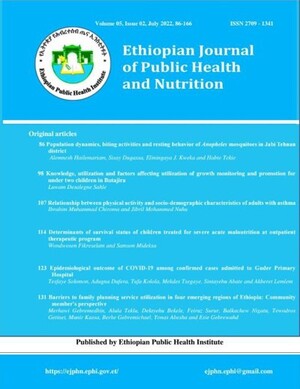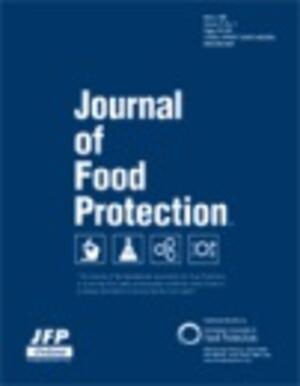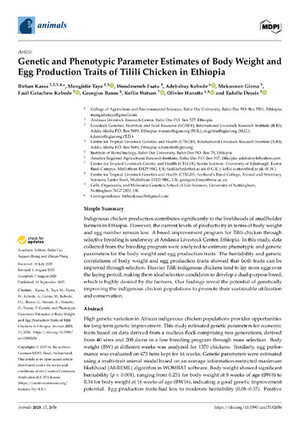
Morphometric differentiation of three chicken ecotypes of Ethiopia using multivariate analysis
Abstract
Twenty-one morphometric traits were measured on 770 extensively managed indigenous chickens in the western zone of Tigray, comprising 412 hens and 358 cocks in three agro-ecologies. The quantitative traits for male and female chicken ecotypes were separately analyzed using multivariate analysis with SAS 2008. Four and seven principal components accounted for about 74.26% and 69.77% of the total variability in morphometric traits for males and females, respectively. Earlobe length, wingspan, skull length, and shank length were the most important traits for discriminating among female chicken ecotypes, while wingspan, neck length, earlobe length, spur length, body length, and shank length were the most important discriminatory traits among male chicken ecotypes. The discriminant analysis accurately classified 97.3% of female and 100% of male chicken ecotypes. Cluster analysis revealed the genetic heterogeneity of indigenous chicken populations in both sexes. This finding suggests the presence of morphological variations among the indigenous chicken populations in the different agro-ecological zones, classified as distinct indigenous chicken ecotypes (Lowland, Midland, and Highland). Further DNA-based studies are needed to confirm and complement these morphological variations for effective conservation and the development of sustainable genetic improvement strategies for indigenous chicken populations in the region.
Citation
Markos, S., Belay, B. and Dessie, T. 2024. Morphometric differentiation of three chicken ecotypes of Ethiopia using multivariate analysis. PLoS ONE 19(2): e0295134.










